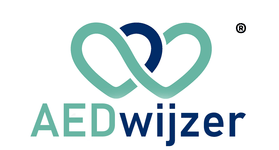
Offer: Philips HS1 AED with lockable outdoor cabinet
Philips HeartStart HS1 AED: user-friendly resuscitation for everyone
The Philips HeartStart HS1 AED is one of the most user-friendly defibrillators on the market, designed for both experienced and inexperienced responders. The HS1 provides clear voice instructions, guiding the user step by step through the resuscitation process. The device performs automatic self-tests to ensure it is always ready for use. Additionally, the HS1 is compact and lightweight, making it easy to carry to any emergency situation.
Aivia 210 AED Cabinet: robust and accessible storage for indoor and outdoor use
The Aivia 210 AED Cabinet offers optimal protection for your AED while ensuring it remains easily accessible. The cabinet features heating and ventilation, making it suitable for both indoor and outdoor use, even in extreme weather conditions. The transparent window ensures that the AED is always visible, while the visual and audible alarms enhance the security of the AED. The Aivia 210 Cabinet provides extra protection and makes it easy to locate and quickly use the Philips HS1 AED in emergency situations.
The importance of an AED nearby
An AED like the Philips HeartStart HS1, combined with the Aivia 210 AED Cabinet, provides life-saving equipment that is always ready for use. During a cardiac arrest, quick access to an AED is crucial because every second counts. The chances of survival for a victim can be significantly increased when an AED is used within minutes to restore the heart’s rhythm.
